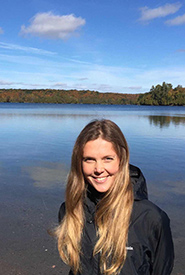Winter on the wet West Coast
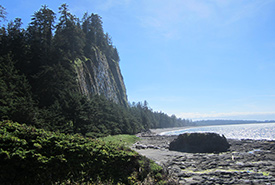
Tow Hill, Haida Gwaii, BC (Photo by NCC)
When you picture winter, images of dripping mosses, lichens and ferns along with long, diffused yellow light rays dappling a lush vibrant green forest floor, combined with the playful cries of the bald eagle, may not be what come to mind. However, out here on the wet West Coast of British Columbia, winter is anything but white at sea level.
Winters on the West Coast of Canada are characterized by rainy days, heavy fog banks and grey skies. In fact, Canada’s coastal rainforest is one of the wettest non-tropical areas in the world. Precipitation amounts vary widely depending on a number of factors. Some of the wettest places along this vast, rugged coastline are found in Haida Gwaii, the central coast and the western shores of Vancouver Island.
The Clayoquot Sound area, which includes several Nature Conservancy of Canada (NCC) conservation areas, can receive more than 3,000 millimetres of rain a year! The rainiest month is typically November, and an average year can have more than 200 days of rain.
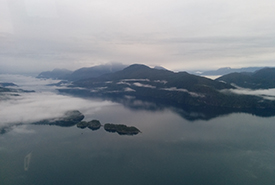
Winters on the West Coast of Canada are characterized by rainy days, heavy fog banks and grey skies (Photo by NCC)
All this rain talk may have you wondering why anyone would ever spend time exploring the West Coast of BC in winter. In my opinion, this is one of the best times of the year to truly experience the dense, coniferous temperate rainforests of the Pacific. This area, where the coastal western hemlock forest-type reigns supreme, show its true splendour. On the foggiest and greyest of days, the fine mist precipitates through the towering trees and down to the thick understorey lining the forest floor.
This is a place where the mountains and the Pacific Ocean shape the surrounding climate and ecology. With close to 25 per cent of the world’s temperate rainforest found in BC, this hyper-productive forest is of great global significance. It’s a haven for biodiversity, not to mention oxygen production and carbon sequestration. Coniferous trees dominate the landscape. They make the most out of the warm regional temperatures and short daylight hours in the winter by maintaining their green foliage, which they can photosynthesize with year-round. Trees in this coastal rainforest form a high canopy and can reach heights of 60 to 70 metres, with trunks measuring up to several metres in diameter.
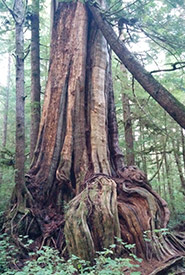
Giant cedar (Photo by NCC)
While trudging around in gumboots and rain gear may not be your thing, there are many reasons to love exploring winter on the West Coast. One is temperature. The West Coast is a temperate climate, with cool summers and mild winters. The year-round average temperature in a place like Tofino, in Clayoquot Sound, is about 10 C, and temperatures rarely drop below zero. If you’re really lucky you may even catch a 20-degrees-and-sunny day in January! While days like these are not common, there’s no better feeling than when the clouds part and the sun shines on your face in the middle of January.
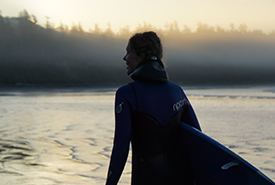
Winter is one of the best times of the year to surf on the West Coast (Photo by NCC)
Winter also brings powerful swell action and winds to the Pacific Ocean and surrounding coastline, opening up a host of winter water activities. This is one of the best times of the year to surf, kiteboard, kayak surf or simply watch the massive waves roll in and crash along the rugged shoreline. All this wave action and rain are often enough to drive people away, so it’s also a great time of year to experience solitude on the West Coast. You might have entire beaches and trail systems to yourself.
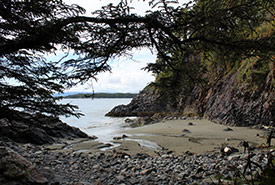
Beach in Tofino, BC (Photo by NCC)
I often think of winter as a time for reflection — a good time to pause between the busyness of summers. I think of this often when walking under the dense canopy layers, listening to the soft sounds of rain falling overhead and the muffled, rhythmic sounds of thunderous waves crashing. I’m sometimes overwhelmed by the rich smells of decay, but also with the sights of the constant renewal of life along the forest floor in this lush ecosystem.
My grandmother was a Canadian landscape artist, who would often paint on the greyest and stormiest days. We would ask her why she chose these days to highlight Canada’s natural beauty. Her response was simple: “Colours in the natural world are closest to their true colour on the darkest days.” I think this is true for the West Coast in winter; a time when the colour green redefines itself in an infinite number of shades. This is why I love to explore the wet West Coast of BC in the winter, and why I encourage you to do the same.

